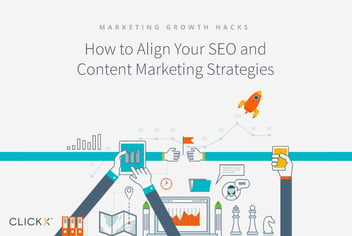7 Micro-Content Pieces Where Content Is a Deal Breaker
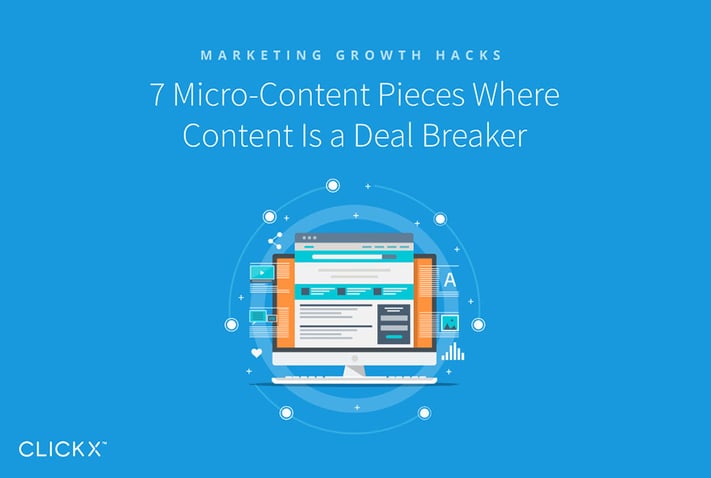
Content is King. You’ve probably heard that before. If you’re a marketer, you certainly have. Although coined long ago, it couldn’t be truer today. Still, many of us are missing out on what constitutes as content. Traditionally, we think of content as:
- Website
- Blogs
- Articles
- Ebooks
- Guides
- Infographics
- Webinars
But content is not limited to these formats. In addition to these types of content types, micro content presents a huge opportunity to marketers. In fact, some type of micro content is so important that it’s a deal breaker for readers. Your content is either good enough or it’s not.
Let’s take a look at seven types of micro content that can be the difference between marketing success and failure.
1. Ad Copy
There’s no such thing as an ad copywriter. Ads are so short that there’s barely any room for content. Take Google search ads. Marketers get 130 total characters to sell and promote a service or product. Additionally, you have to make your ads engaging and convincing so they stand among the sea of all other ads. How do you do that in 130 characters? You probably never thought about it that way, but ad copy is critical to the success of a variety of paid ad campaigns including AdWords, Facebook, and LinkedIn. Just take a look. Which ad copy would you click on?
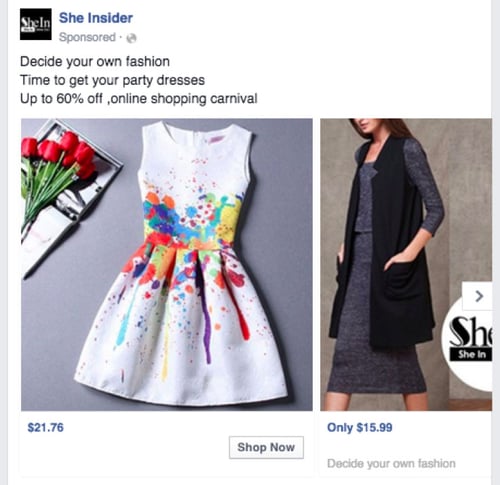
The copy here reads stagnant and grammatical errors are a definite no-no!
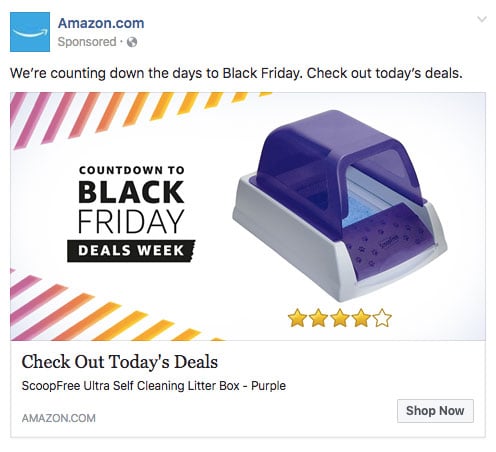
Amazon keeps their ad copy short and sweet, giving consumers a deal even before Black Friday hits.
2. Landing Pages
In an era of distractions, landing pages are a marketer’s solution to getting people to focus on their offer or message. But this great opportunity can easily go to waste if you have lack-luster content or worse – unfocused content. Landing page content has to play a balancing act between selling and sweeping your prospect of their feet. If you’re too sales driven, you’ll probably turn off visitors. If you’re too soft and friendly, you’ll probably lose sight of your landing page’s goal.
The most successful landing pages do a phenomenal job with being helpful, benefit-driven, engaging, clear, convincing, and action-focused.

This landing page is too text heavy and has no call to action button.

Shopify shows landing page visitors their authority with their current number of users and a “featured in the press” section, not to mention a simple checklist.
3. Calls to Action
Calls to action are miniscule content pieces that may seem like no big deal. In fact, many people slap on calls to action without even giving more than a second to think through them. Learn more? Click here? Get to know us, Talk to us, Contact us… The list goes on.
Although they may be just a few words, calls-to-action are critical to the success of just about any marketing initiative. A weak call to action will yield equally weak results. When creating calls-to-action, think short, clear and action-driven. That’s the trifecta for high performing calls-to-action.

This call to action is easy to read and located in the page’s body as well as the top navigation.

The call to action button gets lost in all the text and color, make sure your button stands out from your page!
4. Social Posts
Did you know that over 79% of US Internet users use Facebook? That’s a lot of people. And that means that if you aren’t doing a good job at attracting and engaging this highly captivated audience, you are missing out. Many businesses, however, still have a difficult time seeing the importance of social media.
The problem is not the platform. It’s the content. If you’re social posts are not thought-through and purposeful, you can’t expect much from them either. If you want to see higher traffic, better content discovering and engagement from social users, your social posts need to be more than an after thought. Think through your headlines, pick your words carefully, and be engaging to grab attention. That takes a serious wordsmith.
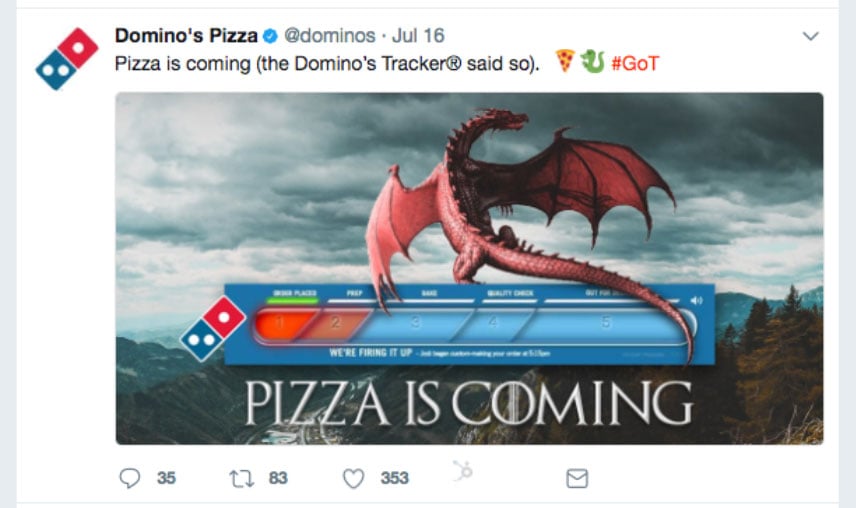
Domino’s takes advantage of trending hashtags by integrating their current features with the popular television series, Game of Thrones.
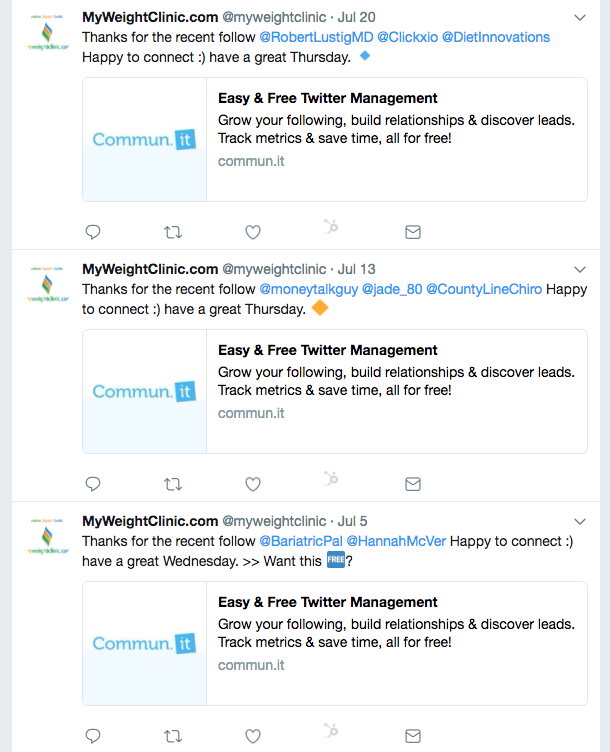
Sometimes automating your social posts is not the best way to engage users! This account’s Twitter feed features generic messages and ultimately lacks variety, steering visitors away from their page.
5. Video Scripts
You probably have a demo video, a company intro video or a promotional video of some sort. Oftentimes people get caught up with the video concept of videos that they forget that the video itself is nothing if the content is not powerful. Before you even delve into video production, think about the purpose of your video. Then, construct your content around that goal. Are viewers supposed to learn something? Are they supposed to be convinced to ask for a demo? Are they supposed to be enticed to sign up for a free trial? Whatever the goal is, your video script should be developed with that in mind. Every sentence – every word – should get the viewer closer towards this goal. Illustrations, graphics and effects should support your goal.
6. Follow Up Emails
Some say that email is dead. Sure. Some stats say that the average person gets around 150 email messages a day. That’s a lot of email to deal with. No wonder email has becoming a challenge for many. How do you stand out in an inbox when there’s 149 others battling for the same attention? It’s all about content. Effective emails are purely good content. The right combination of length and content makes for an effective follow-up email. Whether used in your marketing automation or sales strategy, follow-up emails are critical to getting meetings or signups.
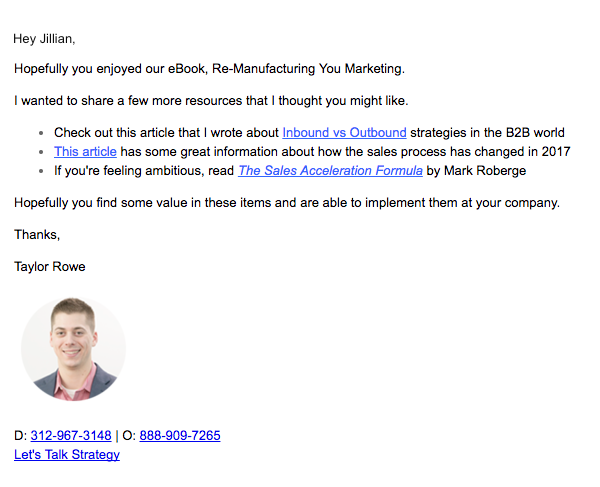
This follow-up email keeps things personal by addressing the recipient by first name and shares valuable information in additional to the content offer they’ve already received.
7. Case Studies
Content is integral towards your entire marketing funnel. From top of funnel to bottom of funnel content, good content makes a difference when it comes to turning searchers into potential clients. Case studies, a bottom of funnel content piece, tends to be thought of simply re-telling stats. However, the right case studies can tip the scale in your favor.
A case study should not just be a retelling of stats. It should paint a picture for a prospect about what it means to work with you. That requires a strong story-telling skill to help clients visualize a potential future working with you. Do it right and they’ll be running to work with you.
Content matters. And it matters a lot when it comes to micro content that is intended to have readers take action. While most people may gloss over micro content, good marketers know that these matter a lot. Next time you’re working on micro content, think about the consequences that bad content can have. That will get you excited about creating good content, even if it’s just a few hundred characters.


